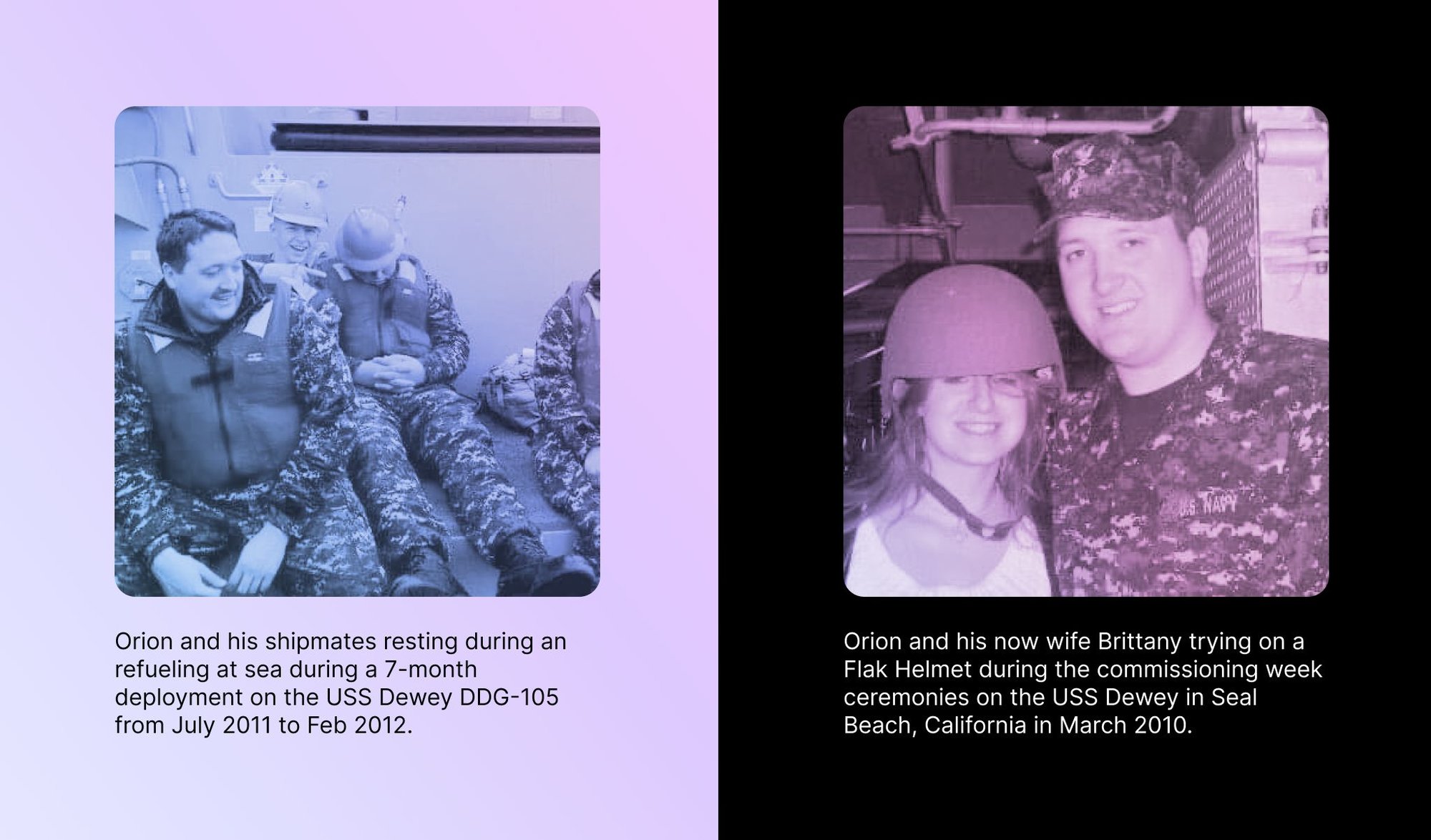
Becoming a veteran requires a transition from the regimented lifestyle as a service member into the civilian world. The majority of veterans joined out of high school or college, and their adult lives have been shaped by their military service. We entrust our service members at a young age with responsibilities that they otherwise would never encounter in the civilian world. These jobs not only require a highly trained technical force, but are often life or death situations.
In my case, I was only 20 when I received orders to my ship. I was responsible for operating & maintaining the computers and networks that powered the multi-million dollar AEGIS Combat system. By the time I was 22, I was on a 7 month deployment in the Persian Gulf, leading a team of fellow technicians supporting combat operations in Iraq & Afghanistan during the 2011 withdrawal from Iraq.
My experience isn’t unique. The average age of the US Military service member is 28 years old, with the vast majority of service members serving one tour and becoming a veteran before the age of 25. My fellow U.S. Navy Veteran at Scale, Nick Falconi, was only 25 when the Navy trusted him to oversee the operations of the nuclear reactor that powered the submarine he served onboard. He did this alone while in port as the Duty Officer, and acted as Senior Officer while the other Senior Officers slept at sea.
Serving in the military requires a commitment that is hard to describe. Having the privilege to do amazing things at such a young age makes it hard to define an identity outside of the military. Becoming a veteran means giving up the military which has defined your adult life up until that point. One day you are a fighter pilot, special forces, or intelligence analyst in the military, and the next you are just a person trying to figure out how to succeed in the civilian world.
It’s already hard to give that up, and enter the civilian world, but it’s even harder to translate that experience into a civilian career. After I left the Navy and transitioned, I made the decision to go to college back home in St. Louis, but I struggled being a 23 year old freshman in classes with 18 year old kids. After a year I decided to enter the workforce while still pursuing my degree. I had difficulty finding entry level IT positions, even though the AEGIS weapon system I supported was similar to the computers & network equipment found at most companies. I use the same technical skills I did in the Navy daily in my current role as the Lead of the Infrastructure & Security team for Scale’s Federal Team.
It wasn’t until I started getting involved in the St. Louis Veterans Community and volunteering that I found the mentors and resources that helped me succeed. I learned from other veterans in the St. Louis community like Steve Wahle & Micheal Bamber how to use my military experience to my advantage. They introduced me to community leaders like Maxine Clark, the founder and former CEO of Build-A-Bear Workshops, who helped me land my first civilian job supporting the computers and networks that powered the Build-A-Bear retail empire.
I strongly believe a successful transition to civilian life is not only key to reintegrating veterans into the community, but it is also a good business decision. Veterans have deep technical knowledge & leadership skills, along with a tenacity that is hard to train that makes successful employees who can jump right into tough problems. Scale recognizes this, and has been successful in its commitment to hire veterans. I’m proud to say that Scale’s veteran population is nearly 5% of the US based workforce exceeding the percentage of veterans in the tech workforce, and one-third of veteran employees are recently separated.
I encourage everyone this Veteran’s Day to commit to helping new veterans. If you are a transitioning service member looking for a new challenge & mission, consider Scale. Our mission is to accelerate the development of AI. If that sounds exciting to you, let's talk.
